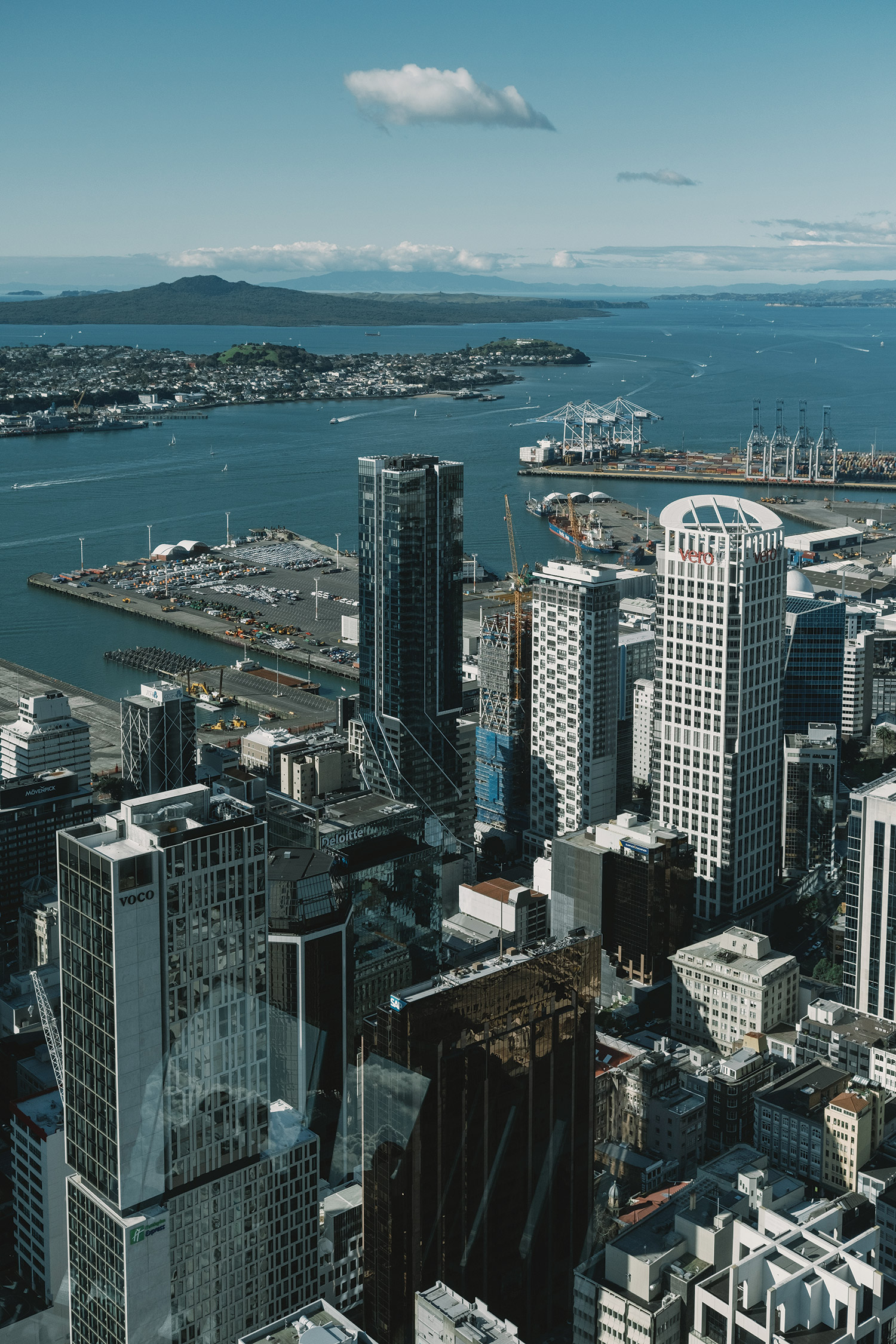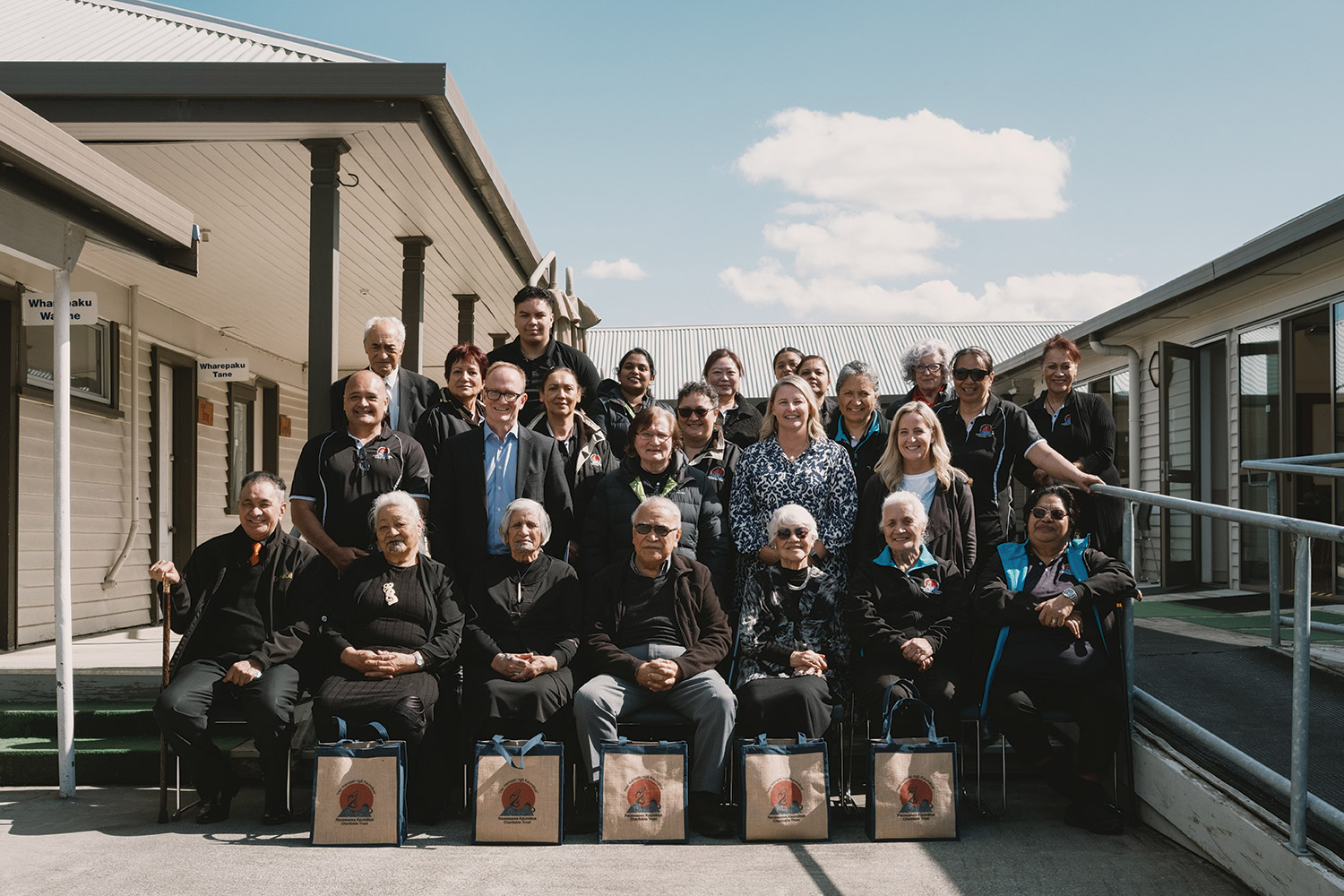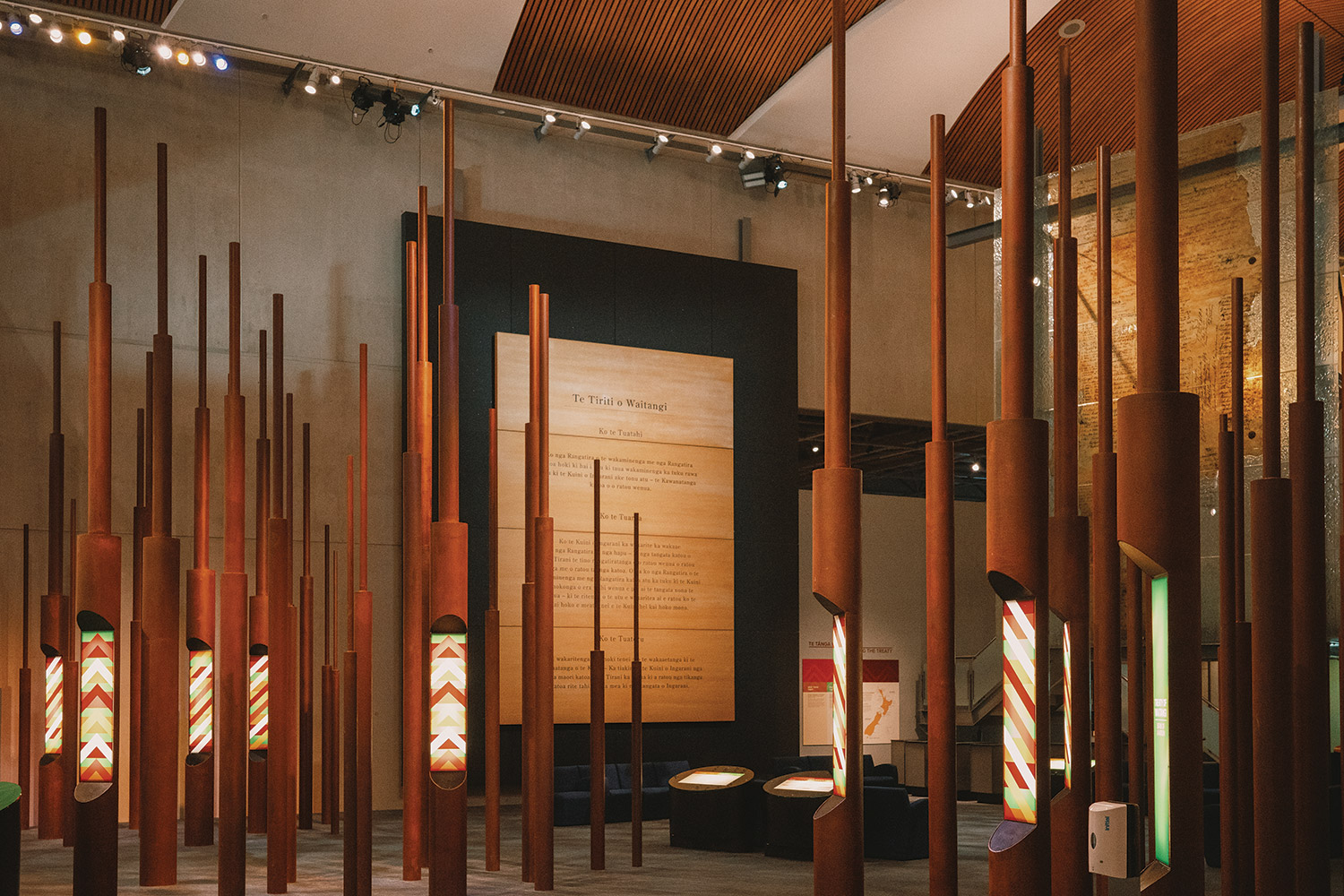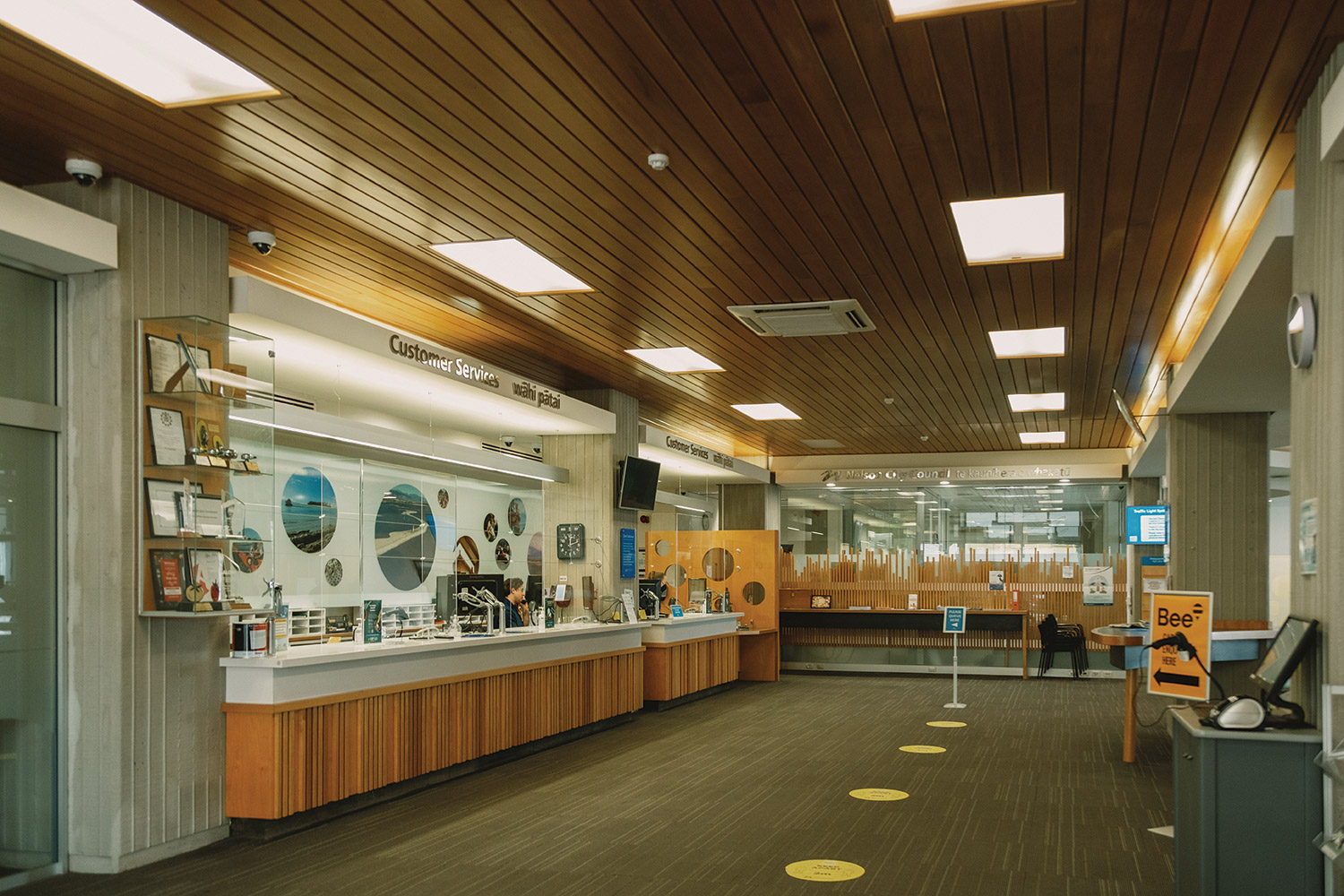By Debra Whitman, Executive Vice President and Chief Public Policy Officer
Peter Rundlet, Vice President, AARP International
Holly Schulz, Senior Advisor, AARP Policy, Research, & International
Download PDF
Among the many highlights of our work is the opportunity to go beyond the shores of the United States to learn about the creative and effective approaches to aging embraced by other societies. This fall we traveled across 16 time zones, to New Zealand, where we would investigate the many ways in which that country is successfully fostering healthy longevity.
We hoped to understand more about how the nation is working to reduce the significant disparities that exist among the indigenous Māori people, the Pasifika (Pacific Island) population, and the present-day majority white European population. With the helpful guidance of New Zealand’s Office of Seniors, over the course of our journey we went to six cities, had dozens of meetings, and met with more than 100 people to get a better sense of what is working so well. As it turned out, our takeaways captured our imagination, just as the nation as a whole did.
Beauty and Contradiction
When Americans think of New Zealand, they might think of the stunning landscape that serves as the backdrop for The Lord of the Rings. Or they may think of the multitudes of sheep that grace that land, or perhaps even kiwis (the fruit, not the rare and famous bird to which the nickname “Kiwi” actually refers). Those especially in the know might also think of rugby and the legendary All Blacks, New Zealand’s national rugby team which opens every match with a haka, the fierce and intimidating ceremonial Māori war dance.
 All of these elements are present (and wonderful) in New Zealand, but what strikes you when you go there and immerse yourself in the culture is the sense of being part of a community that is grappling with its history of colonialism to forge a more equitable future for all who call it home: the indigenous Māori, the majority white Europeans, and the Pacific Islanders who reside there now. To be clear, there are real issues that need to be addressed. For example, the average Māori person lives seven fewer years than their white counterpart — a telling indicator of the underlying disparities that continue to exist between the groups.
All of these elements are present (and wonderful) in New Zealand, but what strikes you when you go there and immerse yourself in the culture is the sense of being part of a community that is grappling with its history of colonialism to forge a more equitable future for all who call it home: the indigenous Māori, the majority white Europeans, and the Pacific Islanders who reside there now. To be clear, there are real issues that need to be addressed. For example, the average Māori person lives seven fewer years than their white counterpart — a telling indicator of the underlying disparities that continue to exist between the groups.
But in a society that once outlawed the use of Te Reo (the indigenous Māori language), preventing generations from learning their native tongue in an attempt to extinguish the language and associated culture, change is happening. For starters, Māori is now one of three official languages of New Zealand (along with English and New Zealand Sign Language). Several people told us that it is nearly impossible to find an opening in a Māori language class these days due to its popularity; meanwhile, on our trip we witnessed such scenes as government officials learning Māori songs and dances during work breaks. Government agencies, civil society, and private businesses now interject Māori into everything they do, and nearly everyone refers to the country as Aotearoa New Zealand, adding the original Māori name. Especially in comparison to the treatment of indigenous populations in other countries, including the United States, there is a genuine sense of cultural embrace.
“Success is Inevitable”
 We are unlikely to ever forget our visit to the Rauawaawa Kaumātua Charitable Trust. Thanks to the wise guidance of Dr. Pounamu Aikman, a Māori friend, we arrived with food. This simple act of manaaki (hospitality), we were told, is an essential part of Māori custom, and too often overlooked by visitors. Standing outside the gates of Rauawaawa, we were greeted by Owen Purcell and Pare Meha, who are both integral members of this impressive organization that serves the needs of the kaumātua (elders) of the region by providing a range of culturally focused and accessible services to enhance their well-being and quality of life.
We are unlikely to ever forget our visit to the Rauawaawa Kaumātua Charitable Trust. Thanks to the wise guidance of Dr. Pounamu Aikman, a Māori friend, we arrived with food. This simple act of manaaki (hospitality), we were told, is an essential part of Māori custom, and too often overlooked by visitors. Standing outside the gates of Rauawaawa, we were greeted by Owen Purcell and Pare Meha, who are both integral members of this impressive organization that serves the needs of the kaumātua (elders) of the region by providing a range of culturally focused and accessible services to enhance their well-being and quality of life.
We were richly rewarded for our small gesture. Above the entrance to this property was a sign — Te Puna o Te Ora, or “Spring of Wellness.” Pare Meha explained that we were to announce our arrival with a Māori song, which she sang on our behalf. On the other side of the threshold, our hosts invited us to cross and join them with a welcome song of their own. With deep appreciation and quiet solemnity, we entered this special space.
Over the course of the next few hours, we were formally welcomed by Māori elders in their native language, and we exchanged words about our shared purpose to achieve greater understanding. During a tour, we learned from their CEO, Rangimahora Reddy, about the variety of services and activities Rauawaawa provides. The staff, she explained, try to weave a blanket of services to “wrap around the kaumātua to keep them warm and safe.” These services include health and well-being services, education and community classes, transportation services, social enterprise and economic opportunities, and more. “As long as the kaumātua are involved, success is inevitable,” Reddy said.
The Trust was founded in 1997 with the guiding principle that the needs of older Māori may differ from the needs of non-Māori in some respects. Nonetheless, Rauawaawa provides services to Māori and non-Māori alike.
After breaking bread with the community, the inescapable feeling that came over us is one that can only be described in one way: the whole environment is infused with love — and joy. On a journey filled with highlights, our visit to Rauawaawa was among the most memorable, and we left with the knowledge that the center is a model for cross-cultural support services for older people that the rest of the world can learn from.
A Flawed but Enduring Treaty
New Zealand is one of a small handful of countries that does not have a written constitution. Instead, New Zealand has the Treaty of Waitangi, which is the foundational document of highest importance to the country. The treaty, which was initially signed on October 6, 1840, by approximately 40 Māori Chiefs and representatives of the British Crown, purports to establish future relations between the Māori and Pakeha (European) communities. Two versions of the treaty were signed, one in Māori and one in English, but they do not align in important respects, particularly with respect to sovereignty over the land.
 As a consequence, many disputes ensued and the New Zealand Land Wars of 1845-1972 between the Māori and European colonizers followed. Despite this, the Treaty endures because it guarantees Māori the “full rights and protections of English subjects” and other promises that the Māori would still like to see fulfilled today. More recently, there has been an evident shift in that direction. In the dozens of meetings we had during our trip, there were only a few in which the significance of the treaty was not referenced. During our conversation with New Zealand Minister of Health Andrew Little, he explained that the country “has been on a journey, certainly during the last 40 or 50 years, of trying to honor it.”
As a consequence, many disputes ensued and the New Zealand Land Wars of 1845-1972 between the Māori and European colonizers followed. Despite this, the Treaty endures because it guarantees Māori the “full rights and protections of English subjects” and other promises that the Māori would still like to see fulfilled today. More recently, there has been an evident shift in that direction. In the dozens of meetings we had during our trip, there were only a few in which the significance of the treaty was not referenced. During our conversation with New Zealand Minister of Health Andrew Little, he explained that the country “has been on a journey, certainly during the last 40 or 50 years, of trying to honor it.”
A New Health Care System for All
We also wanted to understand their health care system. Not long before our visit it was announced that the system would undergo a seismic shift toward a more centralized approach in order to reduce disparities in health care delivery and outcomes across the country. Minister Little described the prior district-based system as “fragmented” and “like a lottery,” saying the government was working to “create a system where all New Zealanders have equitable access to public health.” The new national health reform policy created Te Whatu Ora, Health New Zealand, which is working with the Ministry of Health to implement 26 new priority actions under their Healthy Ageing Strategy. Notably, as part of the transformation, the government also created Te Aka Whia Ora, the new Māori Health Authority, to ensure that “Māori have a greater role in designing health services that better meet the needs of Māori.”
Health New Zealand has taken a life-course approach and broad view of the social determinants of health. Its strategy provides a mandate, making clear which government actors have responsibility for implementing particular elements of the strategy to reduce the fragmentation and uneven access to care. Nicky Smith, who is the Healthy Ageing Manager and implements the strategy, told us that they were working “to wrap the system around the person,” not vice versa.
Significant health, wealth, and well-being disparities continue to exist between the Māori and the majority white population and they won’t be eliminated overnight. But the systemic and cultural shifts are encouraging and should be observed over time to assess their effectiveness.
Forward Advance on Aging Policies
Similar to its work in disparities, New Zealand is working hard when it comes to aging issues. New Zealand has one of the longest life expectancies in the world – and, thanks to its effective response to the pandemic, it is one of the few countries in the world that increased its average life expectancy during the pandemic. In addition to providing universal health care, New Zealand offers a universal pension to everyone age 65 and older to help ensure that its older adults avoid poverty. Although most experts we spoke to said that it was modest and was falling behind rapidly rising housing costs, the superannuation, as it is known, that is provided to all residents starting at age 65 helps ensure a basic standard of living. New Zealand was also the first country in the world to create a universal automatic enrollment retirement savings system — called KiwiSavers — which is an account that moves with the individual from job to job and features a default contribution that is supplemented by a government match; savers also have the opportunity to increase their contribution amounts if they choose. While experts agree the system can be made even better, it represents a notable innovation that other countries, including the United States, should emulate and improve upon.

New Zealand has also joined the World Health Organization’s (WHO) Global Network of Age-Friendly Cities and Communities, which works at the local level to foster the full participation of older people in community life and promote active aging. We met with Hamilton Mayor Paula Southgate and other local leaders who helped their city become the country’s first official community recognized by the WHO. Hamilton has an active and engaged Council on Aging and a comprehensive plan, with 21 objectives and 61 identified actions to achieve their goals. The cities of Auckland and Nelson, which we visited as well, are also WHO Global Network members, and the Office of Seniors is supporting additional communities in becoming age-friendly, as described in their Better Later Life strategy. We benefited from an extensive visit in Nelson, where we saw the implementation of the city’s “Use our Loos” project, which promotes access to toilets in businesses to support older adults, as well as got firsthand looks at a project that engages older people in volunteerism and service and a terrific program that helps adults with mobility issues get onto the beach, among other innovations.
Every person over 65 gets the Gold Card, which provides access to free public transportation during certain hours as well as discounts off of many forms of entertainment. Moreover, New Zealand leads the 38 member countries of the Organisation for Economic Cooperation and Development (OECD) in supporting a multigenerational workforce. In April, the Ministry for Seniors released its new Older Workers Employment Action Plan. Minister Ayesha Verrall told us that about a third of seniors over age 65 still work, half of them out of necessity. The government is actively seeking to lower barriers to work for older adults.
Despite all of the encouraging developments, New Zealand — like other parts of the world, including in the United States — is facing challenges in supporting its caregivers. We met with Laurie Hilsgren, CEO of Carers NZ, which had just released its “State of Caring in Aotearoa,” a detailed look at the dire situation of overstretched caregivers in the nation. Malia Hamani, of TOA Pacific, a nonprofit organization that focuses on the needs of older Pacific Islanders, told us, “Caregivers are too tired and stretched to march in the streets.” Hilsgren said, when it comes to caregivers, “We need a decisive fabulous step forward.”
Policy for People
As we reflect on all of our engagements, it is clear that New Zealand’s policy makers are energized to improve the lives and well-being of the country’s older adults. But the magic of New Zealand seemed to go beyond policy. True to the country’s reputation, there was a palpable feeling of community there and a strong sense that people prioritize being friendly and kind. Government officials like Nicky McDonald, Jessica Ettridge, and Bill Huppler gave up their weekends to ensure we got to see and understand all of the ways in which the city of Nelson is age-friendly. We shared laughs with the irreverent and joyous Katie Williams, the founder of the Kiwi Coffin Club, which gathers community members to create their own beautiful, creative, and fun coffins in order to foster open conversations about death and dying. We visited the phenomenal CARE Village on the shores of Lake Rotorua, which provides world-leading dementia care and housing (based on Holland’s De Hogeweyk model). And more.
Everywhere we went, we heard people use the Māori word whanua. The term literally means “family,” but many used it more broadly, as we might say in the US, “my people” or “my tribe.” There seems to be a consensus there that New Zealanders should pursue the “common good.” In fact, during one of our final meetings, one official from Health New Zealand described the country as “a village of 5 million people.”
We couldn’t describe it better.